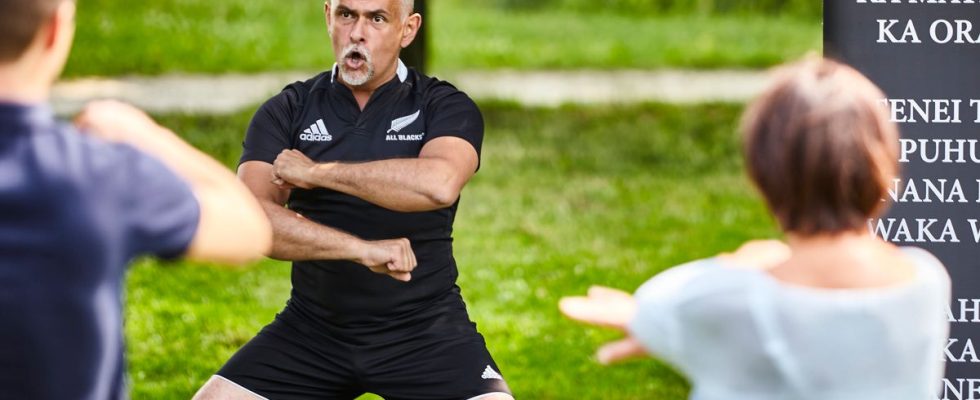” It was impressive ! The whole group was loud, tapping their legs hard… With the vibrations, it was strong, I really felt that we were all together. » If no rugby match involving the New Zealand team begins without the famous haka, it is not only on the pitches that the famous dance is practiced. In recent years, more and more French employees (certainly a little less tattooed) think they are All Blacks, thanks to training sessions. team building who use traditional Maori singing.
At the general professional and agricultural high school of Briacé, in Landreau (Loire-Atlantique), this is in any case how the school year started for the 130 administrative staff and teachers of the establishment, gathered for the occasion in the large amphitheater. “The haka is about giving yourself courage and knowing how to give it,” says Domitille Maillard, executive assistant, still marked by the experience. Everything teachers need who are preparing to welcome students! Our teams are spread across two sites so it was also a good way to unite them, to kick off the year together, with good energy. »
Launch a project, work together…
A custom which already existed in different forms, the haka would therefore have become in the 21st century an attractive management tool, even more in demand during the World Cup. As evidenced by the numerous companies of team building who jumped into the fray. “I speak all over France for seminars, the launch of a new project, the merger of two groups, or quite simply for fun and letting go,” observes Brad Edwards, a New Zealander at the head of Kiwi animations. The haka adapts very well to these situations since in addition to being a warlike dance that intimidates, it is also used to welcome, express oneself, show respect or prepare one’s mind. It is also practiced everywhere, even at weddings or funerals. »
These sessions between colleagues, lasting 30 minutes to 1 hour, generally begin with a short story. That of the Maori chief Te Rauparaha who, pursued by members of an enemy tribe, repeated Ka mate, ka mate (I die) hidden in his shelter, before finally emerging, singing then at the sight of the light Ka ora, ka ora (I live). Once in the atmosphere, it’s up to the open space to transform the experience. “When possible, I like to make small groups so that everyone imagines their own haka,” explains Arman Vossougui, actor and coach at Haka team. It’s an excuse to get to know each other and learn to work together. Everyone invents their own method: some start with gestures, others with words…” An activity which would also allow personalities to reveal themselves. “Some lead the way and prove to be real leaders,” notes Arman Vossougui. This can help HR to reinforce certain choices. »
If it’s just hitting your thighs, “it’s not interesting”
But is performing a choreography in the middle of the meeting room, while grimacing in front of your boss, always an easy thing? If there are always shy or refractory people, the facilitators ensure that the exercise itself easily allows you to let go, even if it is at the back of the room and the movements are not assured. “Everyone moves and sings as one, without judgment or hierarchy,” says Brad Edwards. If we come just to slap each other’s thighs, without understanding all the meaning and respect behind it, it’s not interesting. It’s easier to stick out your tongue and open your eyes wide, when you know that it’s a way of showing that you’re not afraid. »
For Domitille Maillard, it was also the fact of having personalized the experience, by reflecting in advance on the common values between the establishment project and the philosophy of the haka, which made it possible to score points. “I was worried about how it was going to be perceived, but in the end it went down really well,” says the assistant director. As soon as there is meaning behind it, things always go much better. And everyone had a banana. »

